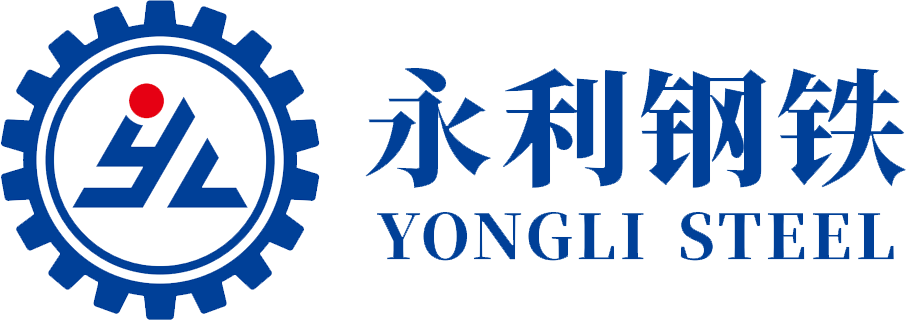-
ProductsFounded in 2000, Yong Li Steel (Tianjin) Co., Ltd. is a modernized steel enterprise integrating steel production, processing, sales and service, rooted in Daqiuzhuang, Tianjin, an important steel industry base in northern China.

-
About usFounded in 2021, Yong Li Steel (Tianjin) Co., Ltd. is a modernized steel enterprise integrating steel production, processing, sales and service, rooted in Daqiuzhuang, Tianjin, an important steel industry base in northern China.

-
CasesFounded in 2000, Yong Li Steel (Tianjin) Co., Ltd. is a modernized steel enterprise integrating steel production, processing, sales and service, rooted in Daqiuzhuang, Tianjin, an important steel industry base in northern China.

-
Contact UsFounded in 2021, Yong Li Steel (Tianjin) Co., Ltd. is a modernized steel enterprise integrating steel production, processing, sales and service, rooted in Daqiuzhuang, Tianjin, an important steel industry base in northern China.

YONGLI
BLOG
01
2025
-
08
High-Frequency Insights: Transforming Industries with Rapid Innovation
Explore the impact of high-frequency trends in various industries and how they shape our future.
High-Frequency Trends: A New Era of Innovation
Ah, the world of business! It's like a rollercoaster ride, full of ups and downs, twists and turns. But if there's one thing that's become crystal clear in recent years, it’s that high-frequency trends are taking the spotlight. These trends are not just fleeting fads; they represent a seismic shift in how industries operate. Buckle up, because we're diving into some industry cases that showcase the power of high-frequency innovation!
Riding the Waves of Tech
First stop: the tech industry! This sector has always been at the forefront of change, but with the rise of high-frequency trading algorithms and real-time data analytics, it's like they've hit the accelerator. Companies such as Amazon and Google utilize high-frequency strategies to analyze consumer behavior almost instantaneously. Think about it: every click you make feeds into a massive data pool that companies can tap into within seconds. This allows them to tailor ads, improve customer experiences, and ultimately, boost profits.
Case Study: Amazon's Dynamic Pricing
Take Amazon, for instance. Their dynamic pricing model adjusts product prices based on demand, competitor pricing, and even the time of day! It’s all thanks to high-frequency algorithms that help them stay one step ahead. One minute you’re eyeing a new gadget at one price, and the next, it could be a few bucks lower—or higher! This constant flux keeps customers coming back, hoping to snag a deal.
Healthcare Revolution: High-Frequency Monitoring
Now, let’s shift gears to healthcare. You might be thinking, "How can high-frequency trends impact my doctor’s visit?" Well, let me tell ya, it’s a game-changer! Wearable tech, like smartwatches, is revolutionizing how we monitor our health. These devices provide high-frequency updates on heart rate, activity levels, and even sleep patterns.
Case Study: Fitbit's Impact on Patient Care
Consider Fitbit. This nifty gadget doesn’t just track steps; it sends real-time data to healthcare providers. Imagine your doctor receiving updates about your health every minute instead of waiting for your next appointment. Talk about proactive care! This high-frequency data empowers patients and doctors alike, leading to better health outcomes.
Finance: The High-Frequency Trading Boom
Let’s not forget the finance sector! High-frequency trading (HFT) has become a buzzword in this industry. By employing powerful computers to execute orders at lightning speed, traders can capitalize on minute price discrepancies. It’s like having a superpower in the trading world!
Case Study: Citadel Securities
Take Citadel Securities, for instance. They’re one of the largest players in the HFT game, executing millions of trades daily. Their algorithms can analyze market conditions in nanoseconds, allowing them to react faster than any human trader ever could. While this raises ethical questions, it undeniably showcases the transformative potential of high-frequency trading.
Looking Ahead: The Future of High-Frequency Trends
As we look to the future, it’s clear that high-frequency trends are not slowing down. From artificial intelligence to blockchain technology, industries are poised for rapid transformation. The key takeaway? Businesses that embrace these trends can not only survive but thrive in an increasingly competitive landscape.
Final Thoughts: Adapt or Get Left Behind
So, what’s the bottom line? High-frequency trends are reshaping industries across the board. Whether it’s tech, healthcare, or finance, the ability to adapt to these changes is crucial. If businesses don’t hop on the high-frequency train, they risk being left in the dust. Remember, in this fast-paced world, it’s not just about keeping up; it’s about staying ahead!
Previous page
COOKIES
Our website uses cookies and similar technologies to personalize the advertising shown to you and to help you get the best experience on our website. For more information, see our Privacy & Cookie Policy
COOKIES
Our website uses cookies and similar technologies to personalize the advertising shown to you and to help you get the best experience on our website. For more information, see our Privacy & Cookie Policy
These cookies are necessary for basic functions such as payment. Standard cookies cannot be turned off and do not store any of your information.
These cookies collect information, such as how many people are using our site or which pages are popular, to help us improve the customer experience. Turning these cookies off will mean we can't collect information to improve your experience.
These cookies enable the website to provide enhanced functionality and personalization. They may be set by us or by third-party providers whose services we have added to our pages. If you do not allow these cookies, some or all of these services may not function properly.
These cookies help us understand what you are interested in so that we can show you relevant advertising on other websites. Turning these cookies off will mean we are unable to show you any personalized advertising.
Copyright © 2025 Yongli Steel






